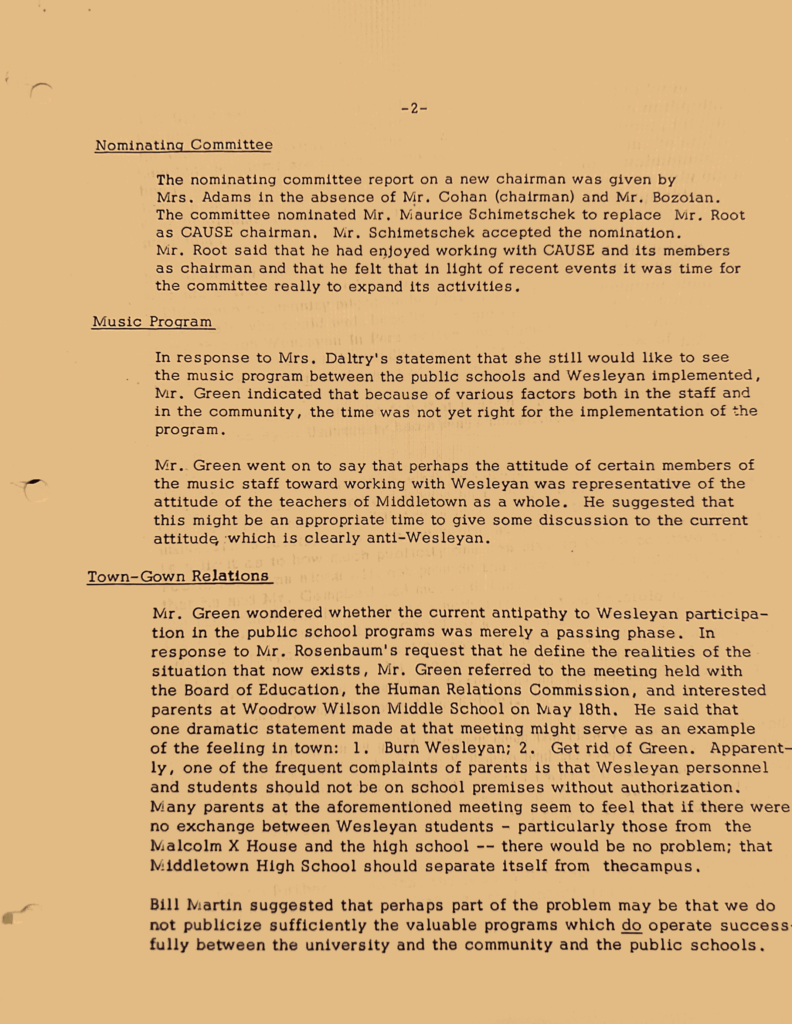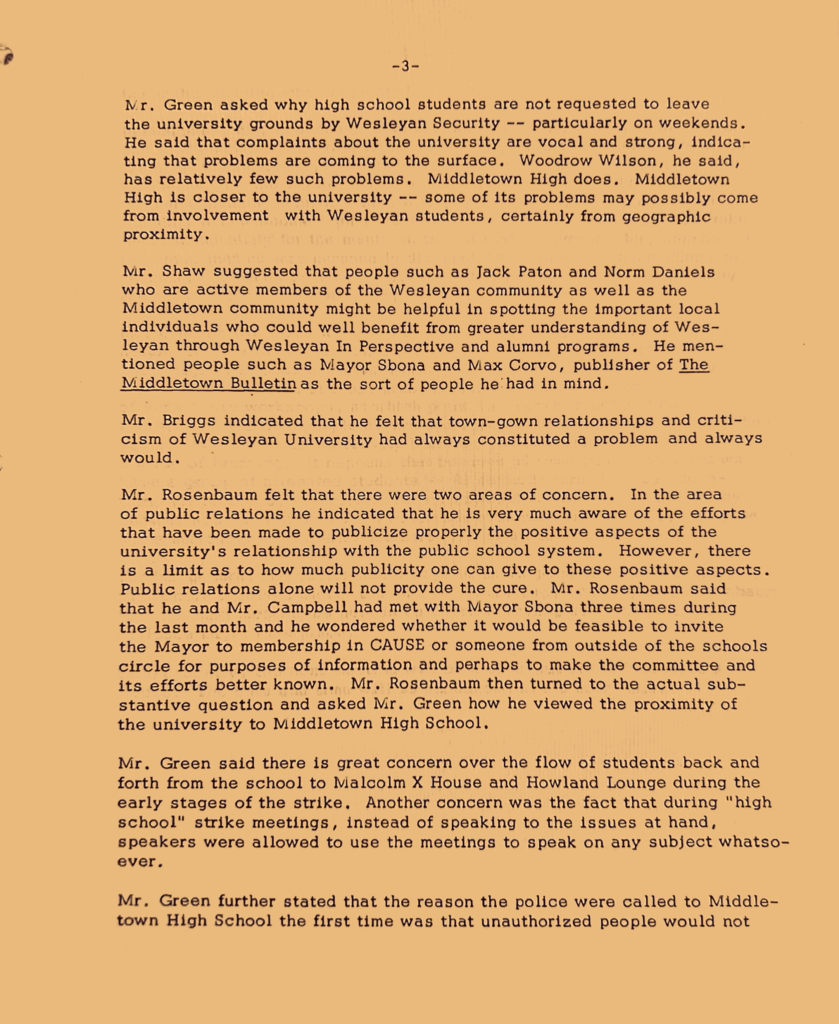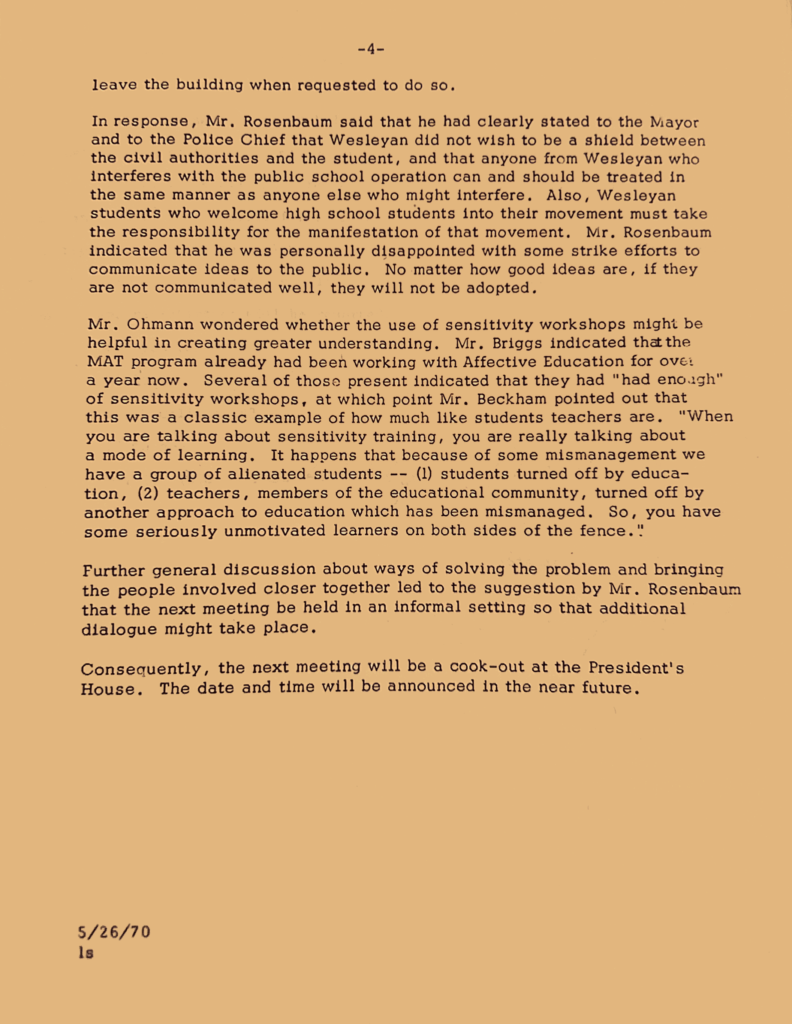C.A.U.S.E.(ing) a Collaboration Between Middletown and Wesleyan University

Since Wesleyan’s founding in 1831, the university has had a rich history of outreach. Outreach, being the lending of service and/or assistance to others, has taken many forms at Wesleyan. From missionary programs in East Asia to science societies where Wesleyan professors and Middletown community members got together to talk about their fields of interest to after school programs at local centers, the university has created ways to share its knowledge and resources with others in different ways throughout its existence.
As a student involved in outreach at Wesleyan in the 21st century, the history of the Middletown-Wesleyan relationship is something I have grown interested in. The town-gown relationship has often been rocky at best, and some outreach efforts from Wesleyan have received backlash from community members. However, as my exhibit shows, there was an important turning point in how Wesleyan started to approach outreach in a way that increased community input and involvement and prioritized listening to what the community expressed need for.
This turning point was a large result of the creation of Community And University Services for Education (CAUSE) by Marjorie Rice Daltry Rosenbaum in 1967. This organization focuses on connecting the Middletown community, Wesleyan, and public and private schools in the Middletown area in order to establish programs that benefit students and educators. Although CAUSE has now been absorbed into the Jewett Center for Community Partnerships (JCCP), which is housed in the Allbritton Center, it remains a pillar of community engagement at Wesleyan and in Middletown.
The Creation of CAUSE and Its Beginning Efforts
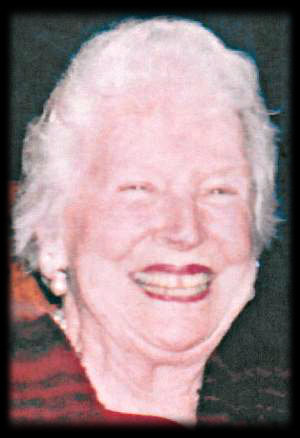
After graduating from Wesleyan University’s Graduate Liberal Studies Program (GLSP) in 1955, Marjorie became an English teacher in the West Hartford and Middletown schools while also teaching at the Wesleyan GLSP. Through her involvement in public schools in Connecticut and her connection with Wesleyan, Marjorie was in an instrumental position to act as a liaison between the two institutions. Knowing that Wesleyan had access to resources and students that could help fill the need for better educational opportunities and services for Middletown students and educators, she formed CAUSE as a Wesleyan organization.
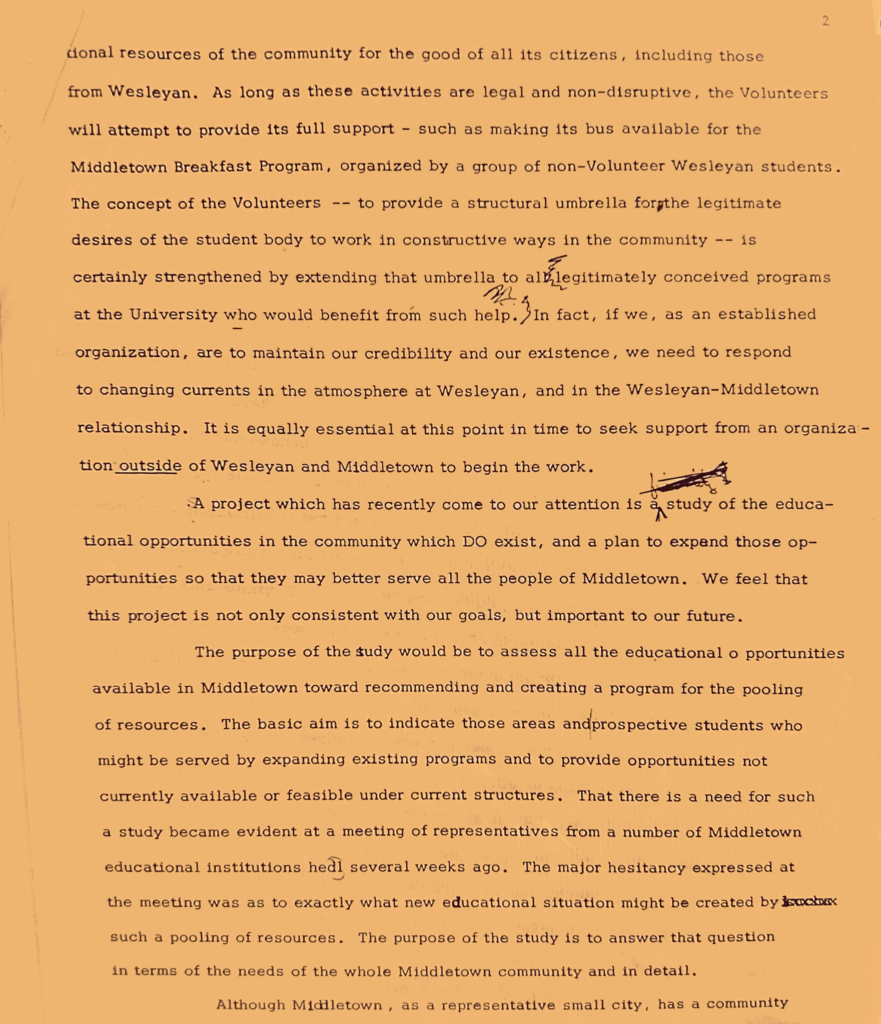
During the first year of CAUSE, a great deal of planning and brainstorming was conducted to figure out what programs were most needed and would be most beneficial to begin working on. One project that the organization decided was important to spend time on was conducting an in depth study of the then current educational opportunities available to Middletown community members. A past approach to outreach programming that many organizations have followed is the “outreachers” (people providing the services) deciding what programs to provide because of their own interest instead of asking “outreach-ees” (people receiving the services) or evaluating the needs of the community. By conducting this study, CAUSE committee members took a step toward prioritizing a community-centered approach to outreach that is more impactful and helpful to Middletown.
Creating and Funding Programs
In the first few years of CAUSE, many programs were established that continue to run today. The first program created through the organization was the Hubbard Elementary School Breakfast program in which Wesleyan students volunteered to prepare and hand out federally funded breakfast food to Hubbard Elementary students. Although this program is no longer functioning, it set the tone for the over fifty projects that CAUSE has adopted and/or created.
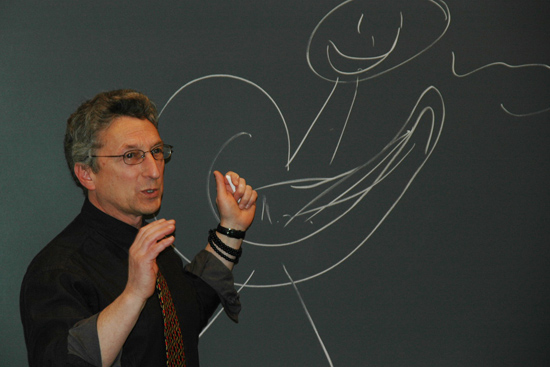
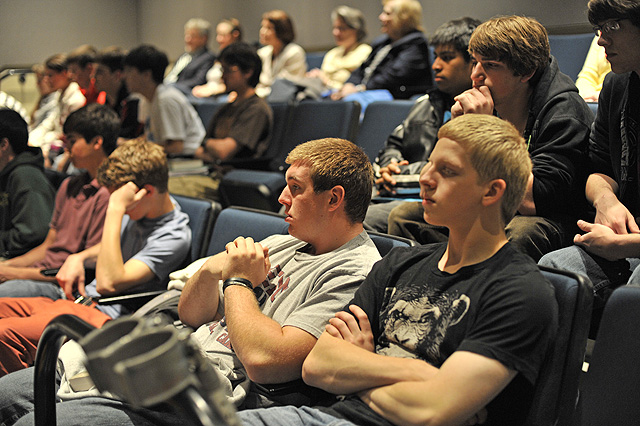
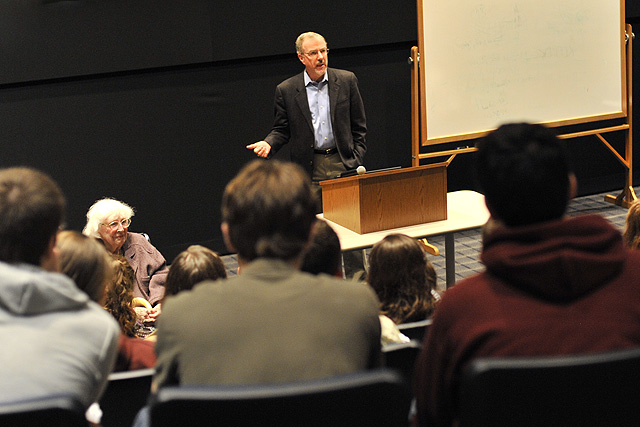
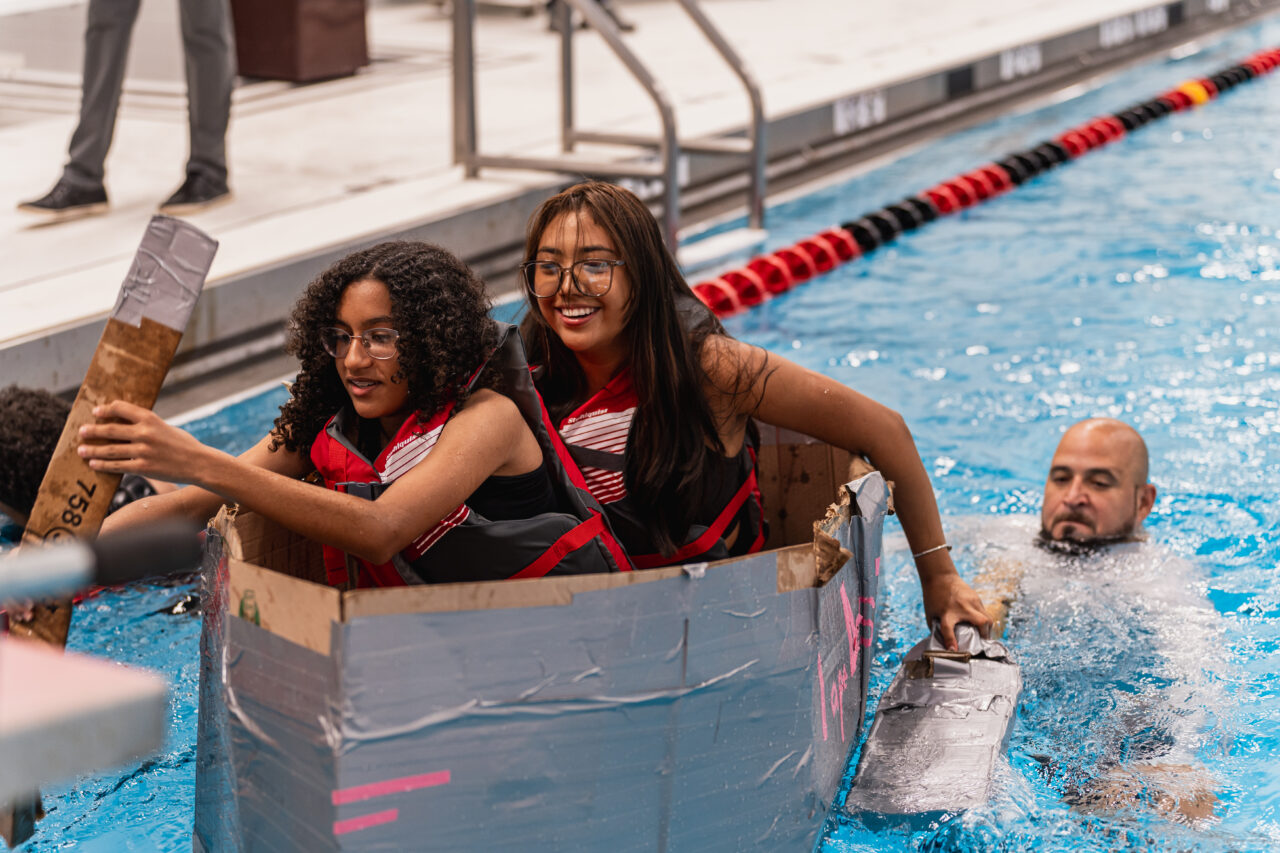
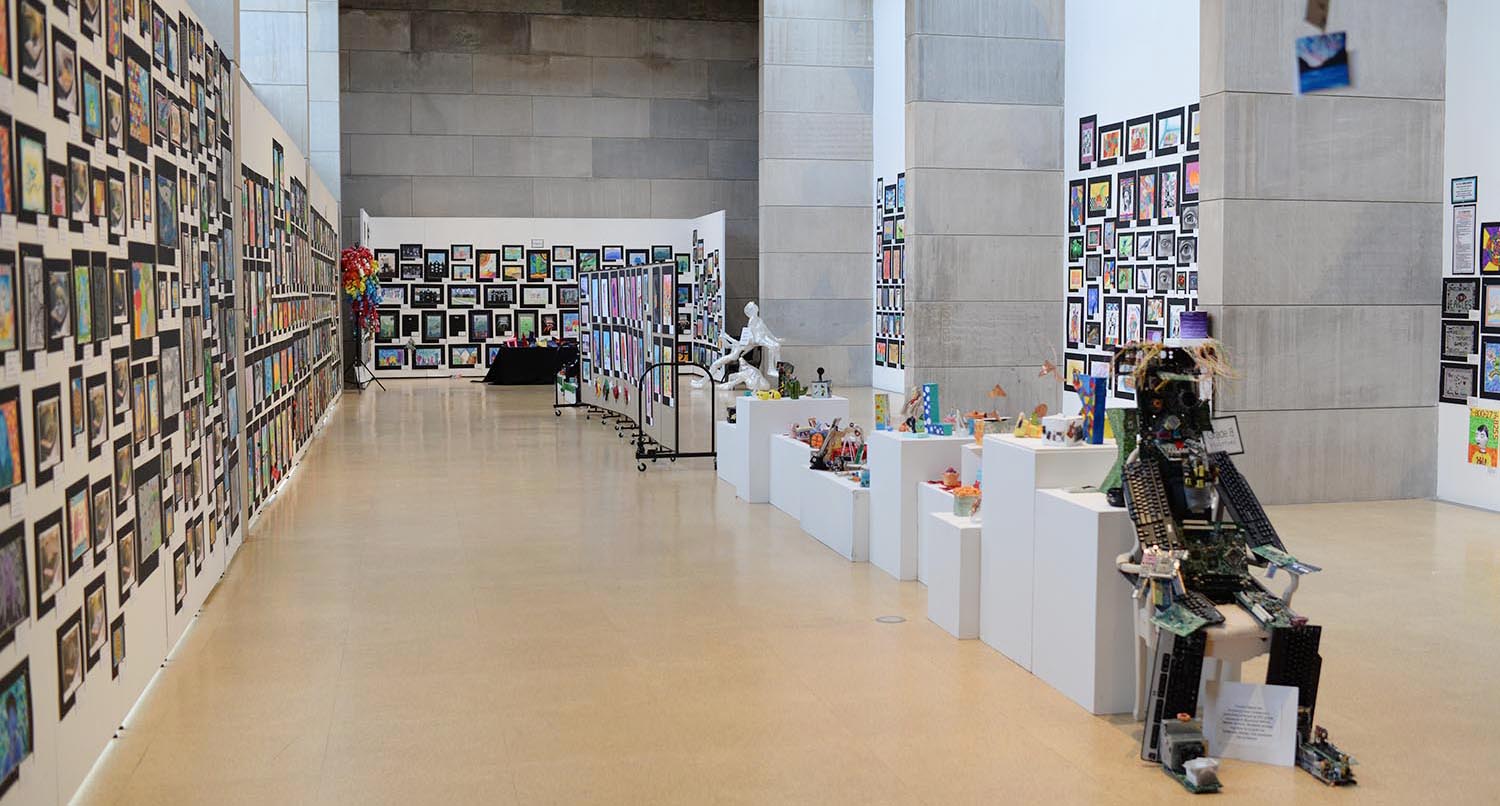
The Enrichment Summer School program provides a summer program for high school students in the Middletown area taught by university faculty across a wide range of topics not usually taught in public schools. The establishment of the High School Humanities Program in which high school students prepare for and attend lectures given by Wesleyan professors is a program that continues to run strongly. Lecturers for this have included Professor Rob Rosenthal, who discussed social and music culture, and Professor Andrew Szegedy-Maszak who taught about Homer’s Odyssey and other ancient Greek literature. Silent Sounds is a “published” literary anthology that collects the writings of 6-12 graders from Middletown schools, and The Art Show collects over a thousand pieces of artwork annually from K-12 Middletown students to showcase them in the Zilkha Gallery. Programs for Middletown educators included the creation of the Middletown Area Teacher Center, which Middletown teachers established and continue to run with support from CAUSE, and access to graduate summer school for teachers.
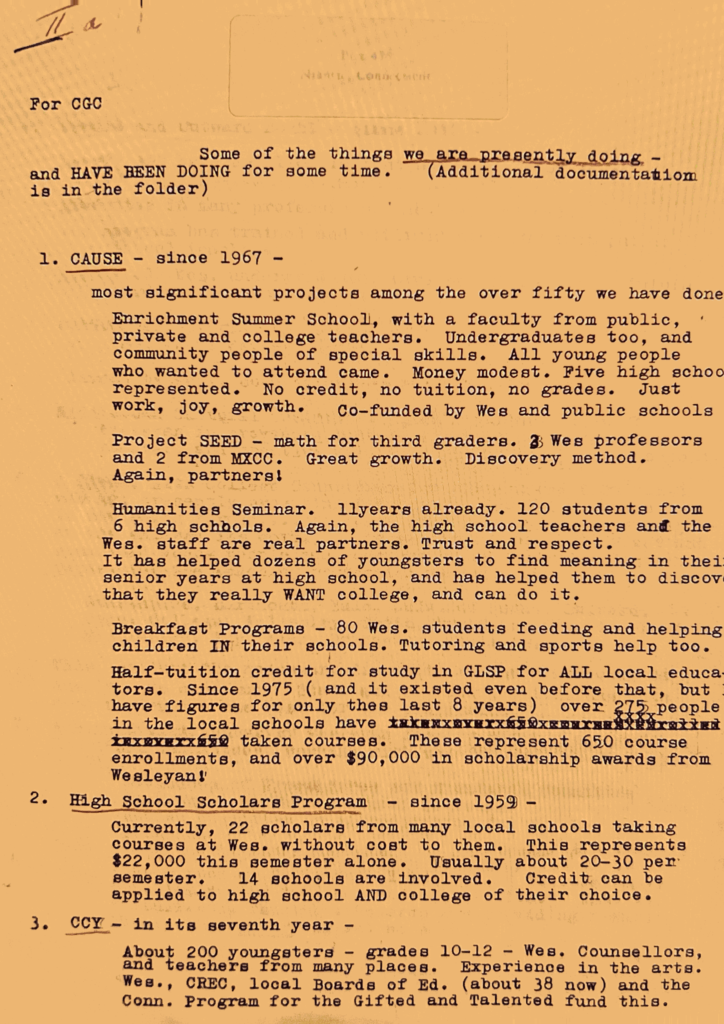
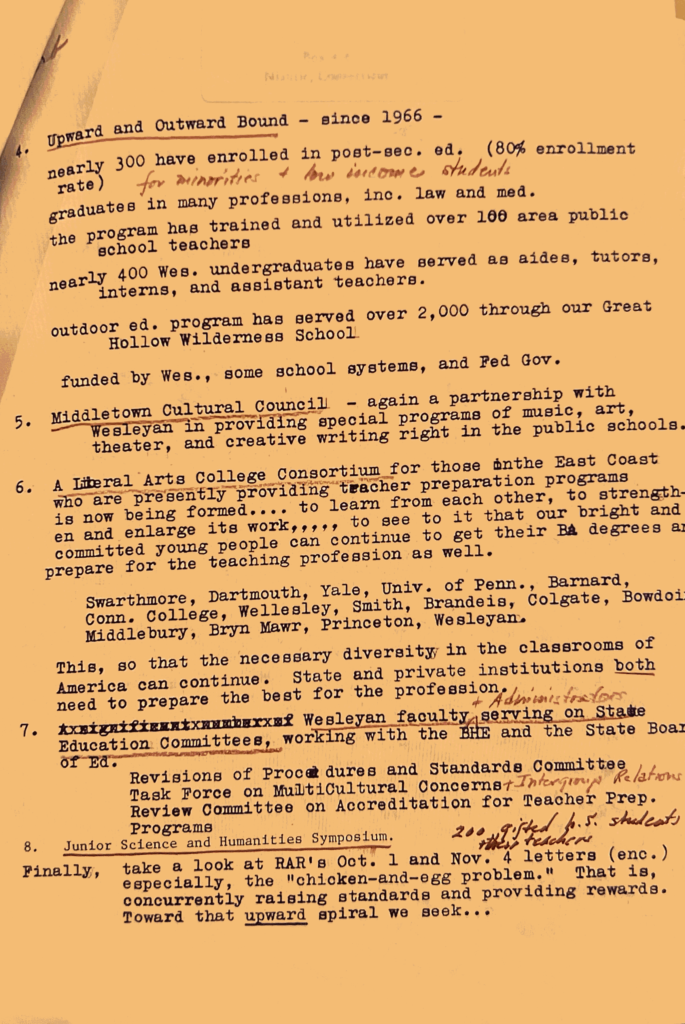
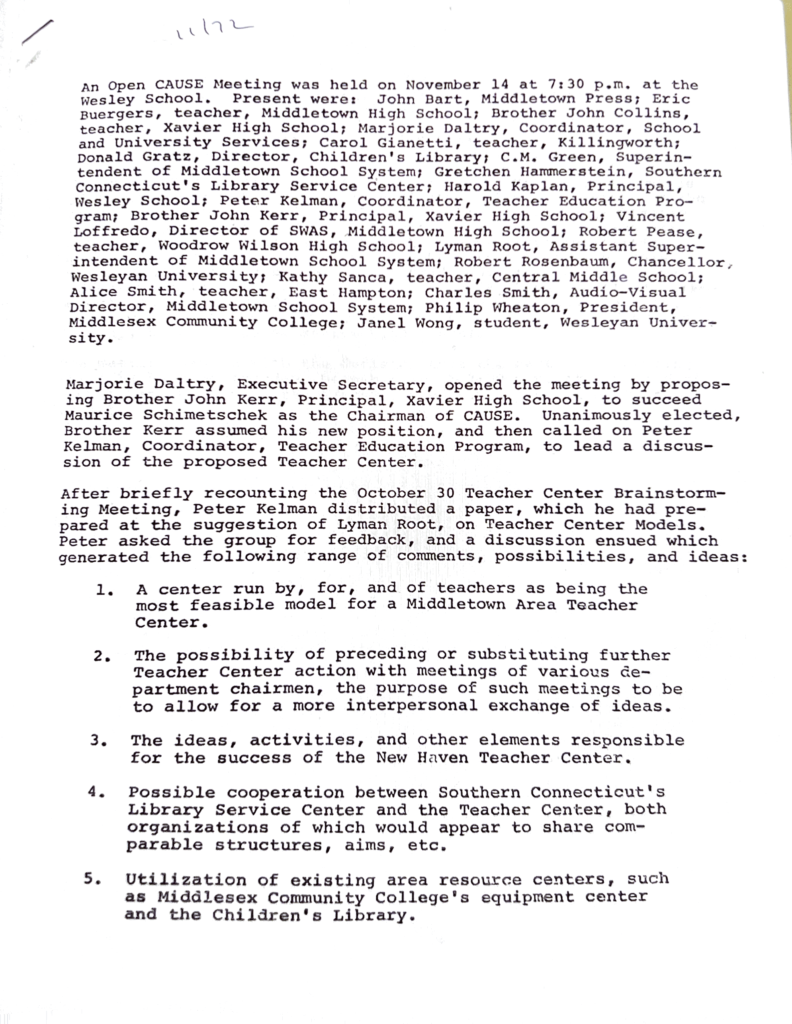
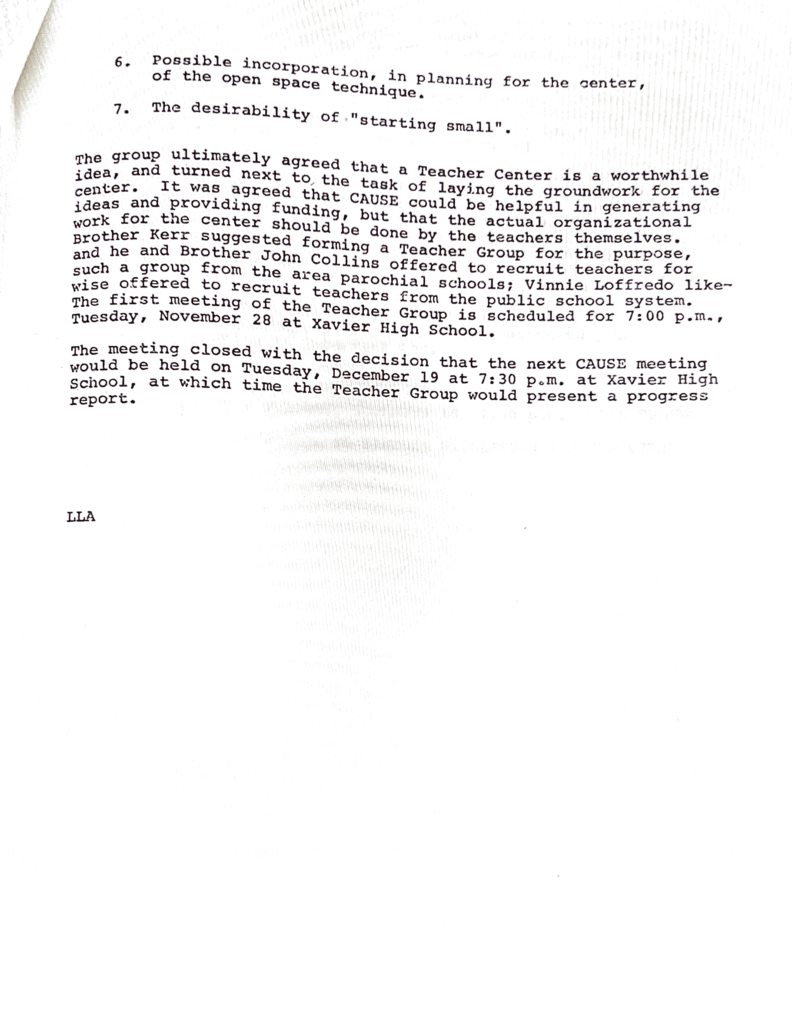
Another important function of CAUSE is to fund programs and trips that Connecticut public and private school educators are not able to pay for on their own. These projects have ranged from bringing in an author to do a read aloud and help kids write their own books, to field trips, to important Middletown institutions to learn about how the city works to a marine ecosystem focused field trip to Hammonasset State Park. By supporting these educator-led programs, CAUSE continues to collaborate with the Middletown community in a way that fulfills their expressed needs.
Community Input
A critical aspect of CAUSE that contributed to its success was the makeup of its committee. Although Marjorie founded CAUSE, she recognized the importance of involving not just Wesleyan faculty members and administration who contributed to CAUSE programs but community members who had stakes in the programs being offered. As CAUSE did not receive a positive response from the Middletown community at first, it was imperative that principals, teachers, and leaders in the community be involved in decision making to provide perspectives on ways to make the organization’s efforts more tailored to the community needs. This is evidenced in the attendee lists in CAUSE meeting notes and in the fact that the chairmen of CAUSE were principals/vice principals in the Middletown school district.
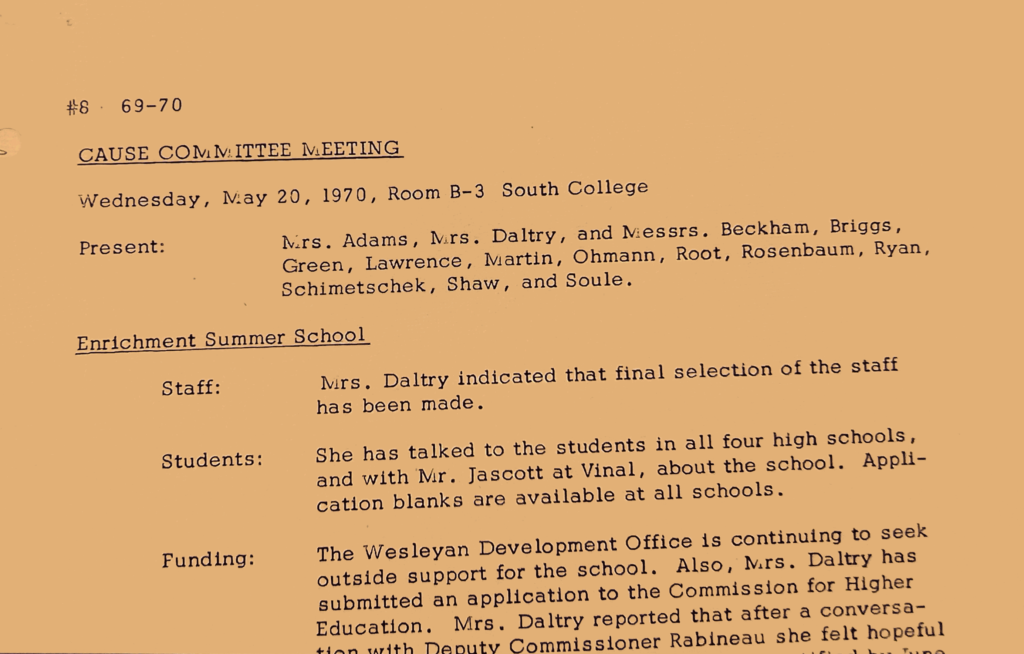
Even with Middletown educators on the CAUSE committee, community members were still unhappy with Wesleyan students coming into their public schools. The solution that the committee came up with was to make all CAUSE meetings open to the public so that those with ideas and/or complaints could voice them directly to the committee. Some meetings were even held in informal settings such as a cookout at the President’s house to encourage community members to attend and to make the committee more approachable. In opening meetings to all, CAUSE continued to build a foundation of community-centered action and created the platform to incorporate input from Middletown residents into their decision making.
CAUSE Today
Although CAUSE today is no longer functioning in the capacity that it did in the second half of the 20th century, it leaves a lasting impact on how outreach is conducted at Wesleyan and an example of how town-gown relationships can be improved through community engagement. With many of CAUSE’s programs functioning under the JCCP (e.g., Silent Sounds, High School Humanities Program, Upward Bound, The Art Show, etc.), the efforts of Marjorie Rice Daltry Rosenbaum and those who supported the creation and facilitation of CAUSE are not lost but bolstered by more resources and community connections.
An important lesson to be learned from CAUSE is the power of listening. From the start of its conception, CAUSE was informed by Middletown educators and actively looked to evaluate the educational needs of Middletown students through research. The organization funded projects identified by Middletown educators to be important for students’ enrichment, and it provided opportunities for students and teachers to access the academic resources Wesleyan has in surplus. As Wesleyan continues to grow its engagement and partnerships with the community, it is imperative to keep in mind these aspects of CAUSE as an example for how to meaningfully and mindfully conduct educational outreach and to continue to keep an open dialogue surrounding community engagement and its history at the university.
Sources
Community And University Services for Education (C.A.U.S.E.) — general materials, 1980, 1982, undated, Box: 1, Folder: 1. Marjorie Rice Daltry Rosenbaum papers, 2013-020. Special Collections & Archives.
Community And University Services for Education (C.A.U.S.E.) — meeting memos and notes, September 1969-March 1970, Box: 1, Folder: 2. Marjorie Rice Daltry Rosenbaum papers, 2013-020. Special Collections & Archives.
Community And University Services for Education (C.A.U.S.E.) — meeting memos and notes, 1971-1973, Box: 1, Folder: 3. Marjorie Rice Daltry Rosenbaum papers, 2013-020. Special Collections & Archives.
Doolittle Funeral Service. (n.d.). Marjorie Rice Daltry Rosenbaum. Tribute Archive. https://www.tributearchive.com/obituaries/2180257/Marjorie-Rice-Daltry-Rosenbaum
Drake, O. (2005, May 23). Wesleyan Professors Lecture to Local High School Students. The Wesleyan Connection. 2024, https://newsletter.blogs.wesleyan.edu/2005/05/23/0505case-htm/
Drake, O. (2012, May 9). High School Humanities Program Celebrates 40 Years. The Wesleyan Connection. 2024, https://newsletter.blogs.wesleyan.edu/2012/05/09/humanitiesprogram/
Drake, O. (2020). Middletown Public School Students Display Artwork at Wesleyan photograph, Middletown.https://newsletter.blogs.wesleyan.edu/2020/03/16/middletown-public-school-students-display-artwork-at-wesleyan/
Kuan, F. (2005). High School Humanities Program photograph, Middletown. https://newsletter.blogs.wesleyan.edu/2005/05/23/0505case-htm/
Kuan, F. (2012). High School Humanities Program photographs, Middletown. https://newsletter.blogs.wesleyan.edu/2012/05/09/humanitiesprogram/
Mavredakis, M. (2023). Upward Bound photograph, Middletown. https://newsletter.blogs.wesleyan.edu/2023/08/08/wesleyans-upward-bound-students-traverse-freeman-pool-in-cardboard-vessels/
Maymi, A. (2023, May 8). The allbritton center pops the wesleyan bubble through civic engagement. The Wesleyan Argus.
Roth, M. (2008, July 19). Community Partnerships. Roth On Wesleyan. 2024, https://roth.blogs.wesleyan.edu/2008/07/19/community-partnerships/Wesleyan University. (n.d.). Community Resources on Campus. Jewett Center for Community Partnerships. https://www.wesleyan.edu/jccp/get-involved/programs/cause.html
